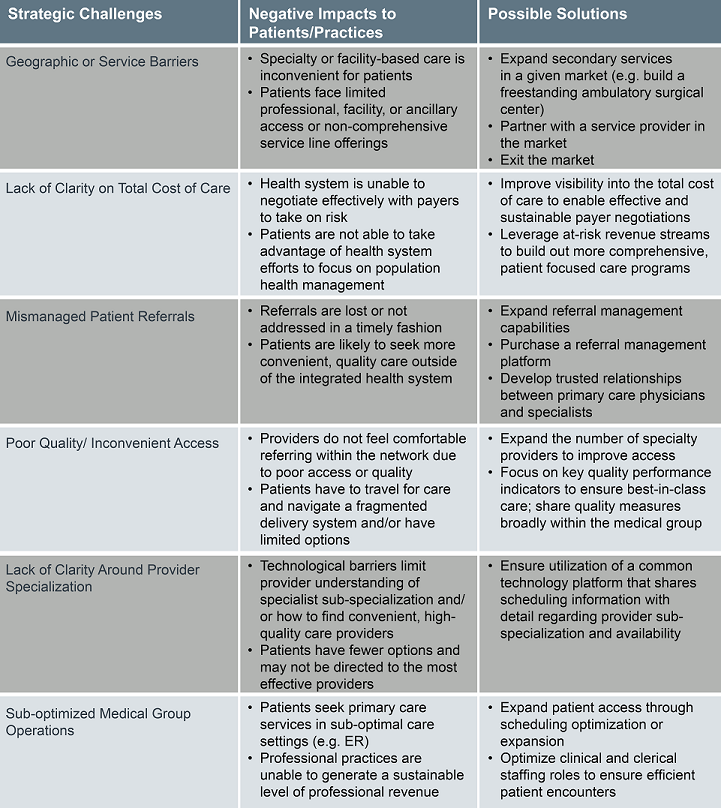As we discussed in our last post, physician enterprise value (PEV) provides leadership the ability to prioritize initiatives and to make meaningful and informed decisions with an understanding of comprehensive health system impact. PEV is, in some cases, the strongest indicator of medical group performance.
We recently partnered with a regional multispecialty group with over 250 providers. In preparation for a significant pivot to value-based care, the organization was focused on getting to a more financially sustainable medical group to support population health and care management investments. But after nearly two years of initiatives to reduce physician operating losses—and despite strong efforts to squeeze out unwarranted expenses, maximize productivity, optimize staffing, and improve the revenue cycle—they only achieved half of their savings target of $5 million.
Their next step? Looking beyond the physician operating loss
Leaders at the organization realized that to achieve a more sustainable health system overall, they had to view the medical group more broadly within the comprehensive patient delivery network. The medical group began to use PEV analytics to drill into gaps along the care continuum: provider introductions, referral challenges, patient risk management, and others.
In less than three years, the medical group executives, operational leaders, and providers became highly engaged in broader care optimization initiatives—and were equipped with the knowledge and tools needed to deliver patient-centered care throughout the integrated care delivery system. And while the operating loss for the medical group remained practically unchanged, the overall contribution margin for the health system, from patients actively managed by the medical group, grew by almost $29 million.
How you can use PEV to prioritize patient-centric strategies
Clearly, these kinds of targeted strategies that are based on holistic physician enterprise value—rather than the more narrow view of the investment or operating loss—can tip the scale toward high performance. By assessing the ROI of the group holistically, health systems can maximize the physician investment while improving patient experience and outcomes across the care continuum.
The following table highlights some example challenges where PEV can serve as a guiding indicator in identifying and quantifying the value of a solution. It is important to note that these are not the only solutions to the outlined challenges, but ones we have seen succeed at our partner organizations.

It is important to note that organizations connecting medical group data with facility data to calculate PEV should ensure that the resulting analytics are excluded from compensation-related decisions. Your health system can work closely with compliance or legal teams to create internal policies and procedures that create a necessary firewall, wherever possible. That being said, there are numerous valuable insights that can be generated from this data to effectively identify opportunities to advance facility and ambulatory access, invest in workflow optimization, strategically expand staffing, evaluate payer contracting strategies, address geographic limiters, and ultimately improve care for patients and the fiscal outlook for the health system.
John Deane is Chairman of Advisory Board Consulting, where he leads transformational engagements focused on health-system sponsored medical groups. Adam Bryan is Vice President of Advisory Board Consulting and leads Advisory Board's technology and data analytics work in service to the employed physician enterprise.This article is part of a series about understanding PEV and using the metric to comprehensively impact health system and medical group performance.
The views, opinions and positions expressed within these guest posts are those of the author alone and do not represent those of Becker's Hospital Review/Becker's Healthcare. The accuracy, completeness and validity of any statements made within this article are not guaranteed. We accept no liability for any errors, omissions or representations. The copyright of this content belongs to the author and any liability with regards to infringement of intellectual property rights remains with them.

